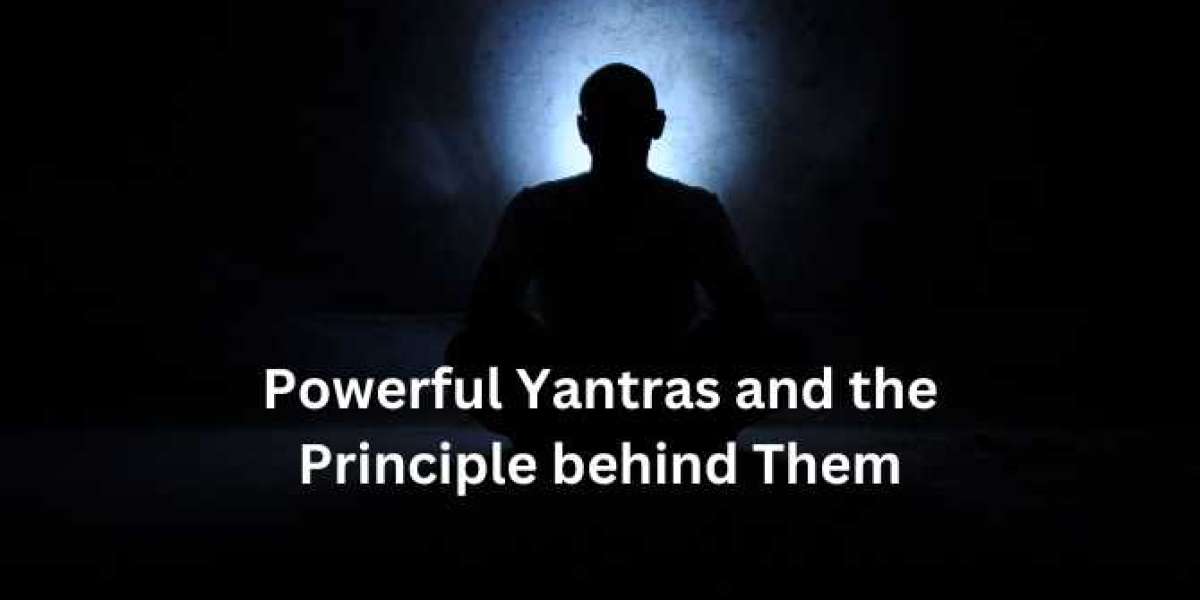Together, Yantra and Mantra build, conserve, and dissolve form.
Meaning of Yantra
Yantra is a Sanskrit word. It comes from the root 'yam,' which means ‘to sustain, hold, or support the energy in a particular element, object, or concept’.
Yantra can refer to any mechanical contrivance that has the power to aid an enterprise. In this sense, a Yantra is any machine or instrument that is used in architecture, astronomy, alchemy, chemistry, warfare, or recreation.
Yantra can also refer to religious enterprises. Mystic Yantras are aids to, as well as the chief instruments of, a meditative discipline. In this context, the Yantra is an abstract geometrical design which works as a tool for meditation and self-awareness.
How Do Powerful Yantras Work?
Each Yantra is a sacred enclosure or a dwelling or receptacle of the chosen god or Ishta-devatā. It is a substitute for the god’s anthropomorphic image. Most Indian divinities, like Krishna, Vishnu, Durgā, etc., have aniconic symbols in their specific Yantras as well as iconographic images.
A deity's Yantra may not look like the iconographic image (murti) in any way. But it retains the suprasensible vitality of the image and expresses the sense and spirit of the original image.
The Principle behind Powerful Yantras
Every Yantra has a power field or a cosmic-sized circuit (kshetra). In this, the powers of the sacred are invoked. The lines and planes which are localized within the Yantra express a transcendental reality, though they are distinct from all the spaces that surround its outer circuit.
Space is the ultimate substratum of all forms. Empty space shares the nature of divinity. It is a primordial substance. Without it, the primordial substance which occupies the entire universe would lack support.
The spaces within a yantra, even if they are minute, can be brought to 'presence' in symbolic terms and expressed as immense, like the spaces within the solar system. In abstract terms, this is the principle behind the space concept of Yantras. In terms of human experience, we locate the sacred by inventing spatial divisions.
Bounding the figure, fencing its 4 quarters, defining its spatial orientations, and delimiting the Yantra’s sacred territory – all these acts assert where holy space begins to manifest.
Powerful Yantras are energized in Tantric ways. This ensures that one gets the maximum results from the Mantra sadhana.
Prana Pratishtha of the Yantra
In the same way that the sadhaka undergoes ritual transformation through the rites of initiation, the Yantra must undergo a complete ritual transformation to become accessible for worship. A very important ritual of Yantra worship is the act of infusing Prana, or vital force, into the geometrical pattern of the Yantra. This is pranapratistha.
The objective of this ritual is to enable the spiritual universe behind myth and iconography to 'descend' into the Yantra. Then it becomes an emblem and receptacle of cosmic power (shakti-rupa) and consciousness (Chaitanya). It transforms into a sacred archetypal space.
When power is transferred from the sadhaka to the Yantra, it changes the nature of the diagram. Also, the consecration of the profane space elevates the sadhaka, who can now realize the inherent energy of the theophany. Thus, the Yantra becomes a powerful channel of contact between the sädhaka and the cosmos.
One can also infuse vital force into the yantra by using symbolic finger gestures or Avahana-mudra. Here, one exhales one’s breath onto the appropriate finger positions, thereby 'arresting' the essence of the divinity symbolically. Then, one slowly allows one’s closed hands to descend onto the Yantra.
In other rituals, the Tantric version of the famous Gayatri Mantra or variants of other well-known mantras are used to install the deity. Some ritual manuals also describe a ceremony where one washes the Yantra ritually with several liquids. The washing symbolizes the cleansing of impurities.
Whichever method the person follows, the pranapratisthā ceremony transforms the Yantra. It now begins to work on a different level of reality. It becomes a receptacle of divine manifestations or the divinity in abstract form.
The Yantra is now 'transformed into a unit of archetypal space or ākāśa, which is identified with Shakti or power. One can no longer equate the Yantra with gross matter that veils the spirit. It is now infused with the being of the deity.
Yantra Pooja
After this comes the external ritual of Pooja, or worship of the deity through the symbol of the Yantra. In general, the sadhaka performs Yantra Pooja daily. This is an individual ceremony by which the sadhaka forms a link with the cosmic forces invoked in the Yantra.
For the Pooja, the ingredients include flowers. incense, water, and food offerings. All of these are very symbolic.
Energizing the Yantra
The effectiveness of powerful Yantras depends on the power of the priest, guru, or whoever conducts the rites associated with the Yantra and its consecration. His power hinges on his knowledge of esoteric practices, self-discipline (tapas), and moral character.
The Yantrachintamani says that one who performs the rites must have faith. If there is a lack of faith, the Yantra’s effect will not just have the opposite effect.
It also says that the officiant should draw the yantra in a lonely spot, with a pure mind, to consecrate it. It should be consecrated with the appropriate mystic incantations for 3 days. On these 3 days, he has to maintain celibacy and sleep on the ground.
The Yantra’s effectiveness can be understood if the officiant dreams during these 3 days. Some dreams are premonitory and hint at the accomplishment of the Yantra's desired objective.
Auspicious dreams indicate the presence of siddhi/power to achieve the desired end. These include dreams of association with women, enjoyment on a mountain top or in a royal palace, a procession of elephants, women singing and dancing, rejoicing in festivals, etc. Inauspicious signs include seeing black soldiers, a state of anarchy, danger from air, fire, air, or water, or a friend’s demise.



